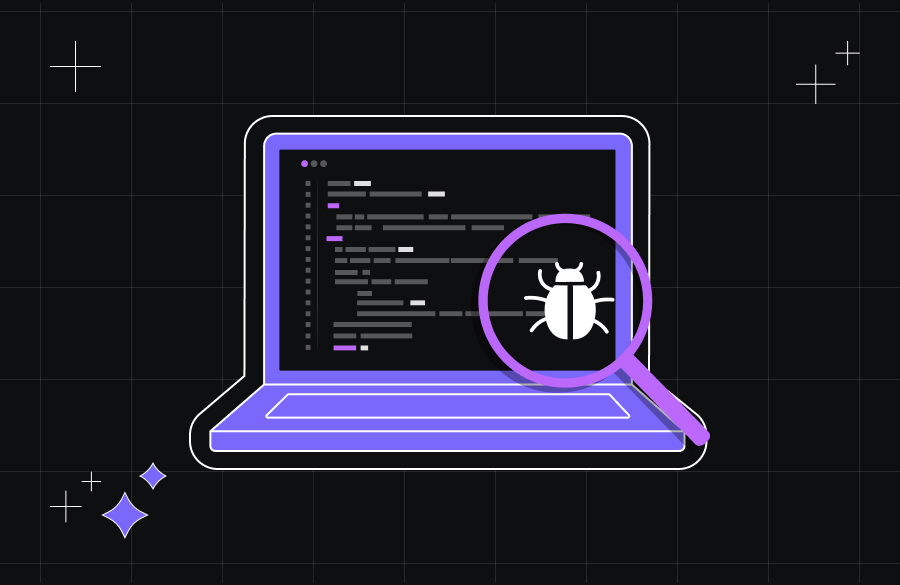The Benefits of Automated Unit Testing in DevOps


Unit testing is an important aspect of software development that helps developers ensure that their code is working as expected. It’s a process that involves writing code to test individual units of code and verifying that they work as intended. In this blog post, we’ll discuss the benefits of automated unit testing and why it’s crucial.
What is Unit Testing?
Unit testing is a product testing strategy where individual units or individual components of the software are separated and tested to ensure that they perform as intended. This approach to testing is done early in the software development process and focuses on verifying the functionality of individual code elements, such as functions, classes, or modules. The purpose of unit testing is to catch any defects or bugs in the code as early as possible, so they can be fixed before the software is released to users.
What Are the Types of Unit Testing?
Two main techniques of unit tests exist manual and automated. Their purpose is to confirm individual components of the tested system.
Type of unit testing:
- White-Box Testing: It involves testing the internal structure of the code. White-box testing is used to verify that each line of code works as intended and that the code’s internal logic is correct.
- Black-Box Testing: It involves testing the external behavior of the code. Black-box testing is used to verify that the code meets the functional requirements and that it behaves as expected in response to specific inputs and conditions.
- Gray box testing: In this type of testing, the tester has some knowledge of the internal structure and workings of the code being tested, but not complete knowledge, and writes tests accordingly.
What is the Difference Between Automated Testing and Manual Testing?
Automated testing and manual testing are two different approaches to testing software. While both methods are important for ensuring the quality and reliability of code, there are several key differences between the two.
Unit test automation refers to the practice of automating the process of testing individual units or components of the software. Automated tests are written using programming languages, and the tests are run using automated testing tools. Automated testing is efficient and can be run quickly and easily, making it ideal for regression testing and continuous integration and delivery. There are many tools available for automated unit testing.
Manual testing, on the other hand, involves manually testing the code by performing manual test cases. This type of testing is performed by a human tester and is often used to test the usability and functionality of the software. Manual testing is also used to validate the results of automated tests and to catch any bugs that might have been missed by automated testing tools.
Here Are Some Key Differences Between Automated and Manual Testing:
- Speed: Automated testing is faster than manual testing, as automated tests can be run quickly and easily. This makes automated testing ideal for regression testing and continuous integration and delivery.
- Cost: Automated testing is more cost-effective in the long run, as the cost of setting up and running automated tests is offset by the cost savings from faster testing and reduced manual testing.
- Consistency: Automated tests are consistent and repeatable, which means that the same tests can be run over and over again, providing consistent results each time. This is not possible with manual testing, as human testers can make mistakes and introduce inconsistencies in the testing process.
- Flexibility: Automated tests can be easily modified and updated, making it easy to change the testing process as the software evolves. Manual tests, on the other hand, are more difficult to change and update, as the tests are performed by a human tester.
- Increased Efficiency: Automated unit testing can significantly increase the speed and efficiency of the testing process. Test cases can be run repeatedly, quickly, and in parallel, which can save time and resources compared to manual testing.
- Improved Reliability: Automated testing is more reliable than manual testing as it eliminates the possibility of human error. Automated tests are repeatable and consistent, reducing the risk of bugs being introduced into the code.
- Easier Maintenance: Automated unit tests are easier to maintain over time compared to manual tests. Test cases can be updated and modified quickly and easily, ensuring that the software continues to be tested effectively as it evolves.
Another benefit of automated testing is its ability to perform large-scale testing, and tests can be run on multiple platforms and environments. Automated tests can easily test multiple scenarios and run multiple test cases simultaneously, making it ideal for testing large and complex software systems. This can help to catch issues that might be missed in manual testing, as human testers can only test a limited number of test cases in a given amount of time.
It is also important to consider the cost of testing. Automated testing can be more expensive in the short term, as there is a significant initial investment in setting up the testing infrastructure and writing automated tests. However, over time, automated testing can save time and resources, as the tests can be run repeatedly and quickly. In contrast, manual testing is generally cheaper in the short term but can be more expensive in the long term, as manual testers must be constantly involved in the testing process to ensure that all scenarios are tested. However, it is important to note that automated testing is not a replacement for manual testing. While automated tests can be very effective at catching issues, they cannot replace the human intuition and creativity that is necessary to find some types of bugs. Additionally, automated tests can only test the code based on the assumptions and inputs that are provided, and they may not be able to detect issues that are the result of unexpected interactions between different parts of the code.
Sample python code
Description: A python sample code to rent a car, take returns, and calculate rental.
# Define a class for the Car object
class Car:
# Constructor method that initializes the object with a make, model, year, and price per day
def __init__(self, make, model, year, price_per_day):
self.make = make # Assign the make of the car
self.model = model # Assign the model of the car
self.year = year # Assign the year of the car
self.price_per_day = price_per_day # Assign the rental price per day of the car
self.is_rented = False # By default, the car is not rented
# Method to rent the car
def rent(self):
if self.is_rented:
# If the car is already rented, raise an exception
raise ValueError('Car is already rented')
else:
# Otherwise, mark the car as rented
self.is_rented = True
# Method to return the car
def return_car(self):
if not self.is_rented:
# If the car is not rented, raise an exception
raise ValueError('Car is not rented')
else:
# Otherwise, mark the car as returned
self.is_rented = False
# Method to calculate the rental price
def get_rental_price(self, num_days):
if num_days < 1:
# If the number of rental days is less than 1, raise an exception
raise ValueError('Number of rental days must be at least 1')
# Calculate the rental price by multiplying the number of days by the price per day
return self.price_per_day * num_days
When testing the code, it is important to consider all possible scenarios. This means creating test cases that cover both normal and edge cases. Normal cases are inputs and scenarios that the code is expected to handle correctly, while edge cases are inputs and scenarios that are outside the norm and may cause errors or unexpected behavior.
To create effective test cases, it is necessary to thoroughly understand the requirements of each function and the expected output for each input. This involves analyzing the code and understanding how it works, including any conditional statements and loops that may affect the output.
The following defines the different test scenarios to be sufficient to cover most of the test cases, still leaving scope for more addition.
1.Test Case: Renting an available car for valid number of days
* Description: Attempt to rent an available car for a valid number of days and verify that the car is marked as rented and the rental price is calculated correctly.
* Test Steps:
• Create a car object
• Call the rent() method on the car object
• Call the get_rental_price() method on the car object with a valid number of days
• Verify that the car is marked as rented and the rental price is correct
2.Test Case: Renting a car that is already rented
* Description: Attempt to rent a car that is already rented and verify that an exception is raised.
* Test Steps:
• Create a car object
• Call the rent() method on the car object
• Call the rent() method on the car object again
• Verify that a ValueError exception is raised with the message 'Car is already rented'
3.Test Case: Returning a rented car
* Description: Attempt to return a rented car and verify that the car is marked as returned.
* Test Steps:
• Create a car object
• Call the rent() method on the car object
• Call the return_car() method on the car object
• Verify that the car is marked as not rented
4.Test Case: Returning a car that is not rented
* Description: Attempt to return a car that is not rented and verify that an exception is raised.
* Test Steps:
• Create a car object
• Call the return_car() method on the car object
• Verify that a ValueError exception is raised with the message 'Car is not rented'
5.Test Case: Renting a car for less than one day
* Description: Attempt to rent a car for less than one day and verify that an exception is raised.
* Test Steps:
• Create a car object
• Call the rent() method on the car object
• Call the get_rental_price() method on the car object with a number of days less than 1
• Verify that a ValueError exception is raised with the message 'Number of rental days must be at least 1'
6.Test Case: Renting a car for one day
* Description: Rent a car for one day and verify that the rental price is calculated correctly.
* Test Steps:
• Create a car object
• Call the rent() method on the car object
• Call the get_rental_price() method on the car object with a number of days equal to 1
• Verify that the rental price is equal to the price per day of the car
7.Test Case: Renting a car for multiple days
* Description: Rent a car for multiple days and verify that the rental price is calculated correctly.
* Test Steps:
• Create a car object
• Call the rent() method on the car object
• Call the get_rental_price() method on the car object with a number of days greater than 1
• Verify that the rental price is equal to the price per day of the car multiplied by the number of days.
8.Test Case: Renting multiple cars
* Description: Rent multiple cars and verify that each car is marked as rented and the rental price is calculated correctly for each car.
* Test Steps:
• Create two car objects
• Call the rent() method on the first car object
• Call the rent() method on the second car object
• Call the get_rental_price() method on the first car object with a valid number of days
• Call the get_rental_price() method on the second car object with a valid number of days
• Verify that both cars are marked as rented and the rental price is correct for each car
9.Test Case: Renting a car with a negative price per day
* Description: Attempt to create a car object with a negative price per day and verify that a ValueError exception is raised.
* Test Steps:
• Attempt to create a car object with a negative price per day
• Verify that a ValueError exception is raised with the message 'Price per day cannot be negative'
10.Test Case: Renting a car with a non-integer year
* Description: Attempt to create a car object with a non-integer year and verify that a ValueError exception is raised.
* Test Steps:
• Attempt to create a car object with a non-integer year
• Verify that a ValueError exception is raised with the message 'Year must be an integer'
11.Test Case: Renting a car with a make or model that is not a string
* Description: Attempt to create a car object with a make or model that is not a string and verify that a ValueError exception is raised.
* Test Steps:
• Attempt to create a car object with a make or model that is not a string
• Verify that a ValueError exception is raised with the message 'Make and model must be strings'
12. Test Case: Returning a car that has already been returned
* Description: Attempt to return a car that has already been returned and verify that an exception is raised.
* Test Steps:
• Create a car object
• Call the return_car() method on the car object
• Call the return_car() method on the car object again
• Verify that a ValueError exception is raised with the message 'Car is not rented'
Example test case code for the positive and negative scenario as follows
* renting the car when it is not already rented
* renting the car when it is already rented
* returning the car when it is rented
import unittest
class TestCar(unittest.TestCase):
def setUp(self):
# Create a Car object for use in the tests
self.car = Car('Honda', 'Civic', 2018, 50)
def test_rent(self):
# Test renting the car when it is not already rented
self.car.rent()
self.assertTrue(self.car.is_rented)
# Test renting the car when it is already rented
with self.assertRaises(ValueError):
self.car.rent()
def test_return_car(self):
# Test returning the car when it is rented
self.car.rent()
self.car.return_car()
self.assertFalse(self.car.is_rented)
# Test returning the car when it is not rented
with self.assertRaises(ValueError):
self.car.return_car()
def test_get_rental_price(self):
# positive test case
# Test calculating the rental price for a valid number of days
rental_price = self.car.get_rental_price(5)
self.assertEqual(rental_price, 250)
# negative test case
# Test calculating the rental price for an invalid number of days
with self.assertRaises(ValueError):
self.car.get_rental_price(0)
if __name__ == '__main__':
unittest.main()

When it comes to software testing, one question that often arises is when to use automated testing and Manual testing.
When to use Manual Testing?
Manual testing and automated testing both have their own advantages and disadvantages, and there are situations where one may be more appropriate than the other.
Manual testing is typically better than automated testing in the following situations:
- Exploratory testing: Exploratory testing is an approach where the tester explores the software application to identify defects or bugs that may not be found by following a predefined test plan. Manual testing is more effective for exploratory testing because it allows the tester to interact with the software in a way that automated testing cannot.
- User interface testing: Automated testing tools may not be able to fully test the user interface of an application. Manual testing is more effective for testing the user interface of an application because it allows the tester to interact with the application in the same way as the end-users.
- Usability testing: Automated testing tools cannot evaluate the application’s usability. Manual testing is more appropriate for evaluating the user experience of an application.
- Ad hoc testing: When you need to test something quickly or when you want to test a specific scenario that is not covered by existing test cases, manual testing can be more efficient than creating an automated test.
- Early testing: When the system under test is in the early stages of development, and the requirements are still being defined, manual testing may be more appropriate than automated testing. This is because the system may frequently change during this phase, making it difficult to maintain automated tests.
In conclusion, manual testing is appropriate when testing requires human interaction, exploration, or evaluation. Automated testing may be better suited for repetitive, time-consuming, or complex tests. The decision of which testing method to use depends on the requirements and constraints of the testing project.
When to Use Automated Testing?
While manual testing has its place, there are several situations where automated testing is the better choice. Here are some of the key scenarios where automated testing should be considered:
- Large Codebases: For large and complex codebases, manual testing can be time-consuming and difficult to manage. Automated testing can quickly and easily test a large number of code elements, reducing the time and effort required for manual testing.
- Regression Testing: Regression testing involves re-testing the software after changes to ensure that no new bugs or issues have been introduced. Automated testing is ideal for regression testing as it can quickly and easily re-test the software after changes have been made.
- Repeatable Tests: Automated testing is ideal for repeatable tests, such as testing the same code element over and over again. This is because automated testing eliminates the risk of human error and provides consistent results.
- Time-Consuming Tests: Some tests, such as performance testing, can be time-consuming to perform manually. Automated testing can quickly and easily perform these tests, reducing the time and effort required for manual testing.
- High-Risk Tests: Tests that involve a high risk of human error, such as security testing, are ideal for automated testing. Automated testing eliminates the risk of human error, ensuring that the tests are performed accurately and consistently.
The main difference between automation unit testing and manual testing is that automated testing is performed using tools and scripts, while manual testing is performed by a human tester. Automated testing is faster, more consistent, and less prone to human error compared to manual testing, but it requires a significant initial investment in terms of time and resources to set up the testing environment and create the test scripts. Manual testing, on the other hand, is more flexible and can provide valuable insights and understanding of the software, but it is more time-consuming and can be prone to human error.
The purpose of unit testing is to validate the functionality of each unit of code, to identify bugs and issues early in the development process, and to ensure that each unit works as expected. Automated unit testing is achieved by writing test cases in code and using testing frameworks to execute those tests. This approach can increase the speed and reliability of testing and reduce the time and effort required for manual testing. Additionally, automated unit tests can be run continuously as code changes, making it easier to detect and prevent regressions.
Automated unit testing is an essential component of a comprehensive testing strategy, helping to ensure that software is of high quality and meets the requirements of users.
Conclusion
In conclusion, it is important to consider the scope of testing, the speed, cost, and flexibility of the testing process, and the expertise of your testers when choosing between automated and manual testing. By using the right approach, you can ensure that your software is thoroughly tested and of high quality, and that any issues are caught and fixed before the software is released to the public. Whether you choose automated testing, manual testing, or a combination of both, the goal is to ensure that your software is of the highest quality and meets the needs of your users.



